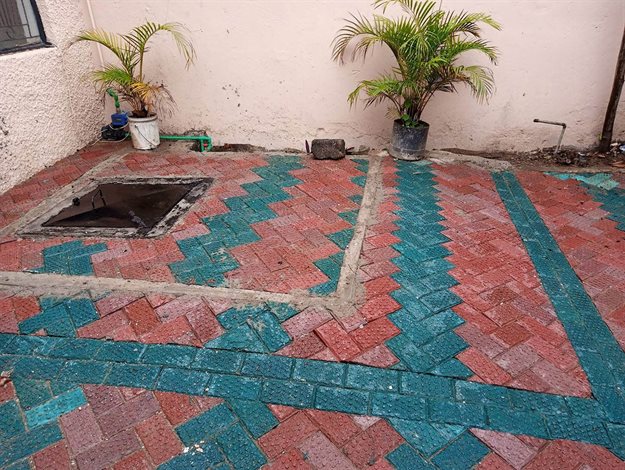
With her initiative, Matee has recently been named a Young Champion of the Earth 2020 Africa winner at the United Nations Environment Programme (UNEP). The award "provides seed funding and mentorship to promising environmentalists as they tackle the world's most pressing challenges".
Gjenge Makers has begun using the product with paving stones applied in houses, schools or streets. The product is highly durable, reducing its maintenance costs. The startup produces about 500-1000 bricks per day, "recycling close to 500kg of plastic waste a day".
"Plastic waste is not just a Kenya problem, but it's a worldwide problem," said Matee. "Here in Nairobi, we generate about 500 metric tonnes of plastic waste every single day and only a fraction of that is recycled."
"We decided what more can we do instead of just sitting in the sidelines and complaining. Essentially, companies have to pay to dispose the waste, so we solved their problem."
"That waste essentially comes for free," said Matee.

Explaining the process in detail, her company gets the plastic waste from packaging factories or buys it from other recyclers, she mixes it with sand as the plastic behaves as the binder. The company has three machines, the extruder does the mixing of plastic waste with sand at very high temperatures and then the press compresses it.
"Plastic is fibrous in nature, so therefore, the brick ends up having a stronger compression strength," Matee added. "We right now have a capacity of producing 1,000 to 15,000 bricks a day."
"So far we have recycled 20 metric tonnes, and we're looking to push that value to 50 by the end of next financial year," she added.
"Plastic is a material that is misused and misunderstood. The potential is enormous, but its after life can be disastrous."

The company's pavers are fully certified by the Kenyan Bureau of Standards. They have a melting point over 350°C, and they are much stronger than their concrete equivalents.
Matee, who specialised in material science and worked as an engineer in Kenya’s oil industry, was inspired to launch her business after routinely coming across plastic bags strewn along Nairobi’s streets.
In 2017, she quit her job as a data analyst and set up a small lab in her mother’s backyard. There, she began creating and testing pavers, which are a combination of plastic and sand.
Although her neighbours complained about the noisy machine she was using, Matee waited for one year to develop the right ratios for her paving bricks.
"I shut down my social life for a year, and put all my savings into this,” she said. "My friends were worried."
"Through trial and error, she and her team learned that some plastics bind together better than others. Her project was given a boost when Matee won a scholarship to attend a social entrepreneurship training programme in the United States of America. With her paver samples packed in her luggage, she used the material labs in the University of Colorado Boulder to further test and refine the ratios of sand to plastic," explains UNEP.

"We must rethink how we manufacture industrial products and deal with them at the end of their useful life," said Soraya Smaoun, who specialises in industrial production techniques with UNEP.
"Nzambi Matee’s innovation in the construction sector highlights the economic and environmental opportunities when we move from a linear economy where products, once used, are discarded, to a circular one where products and materials continue in the system for as long as possible."
Article originally published on World Architecture Community.

Since 2006, World Architecture Community provides a unique environment for architects, architecture students and academics around the globe to meet, share and compete.
Go to: https://worldarchitecture.org/